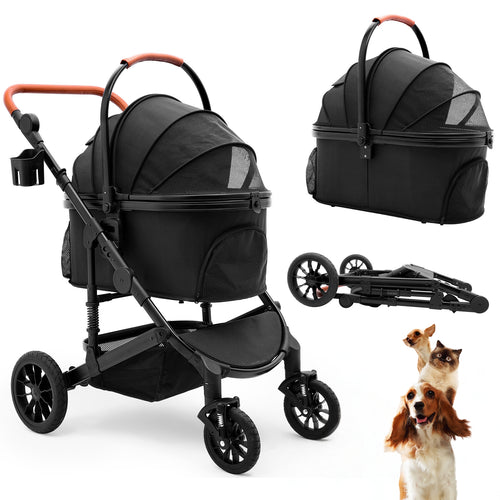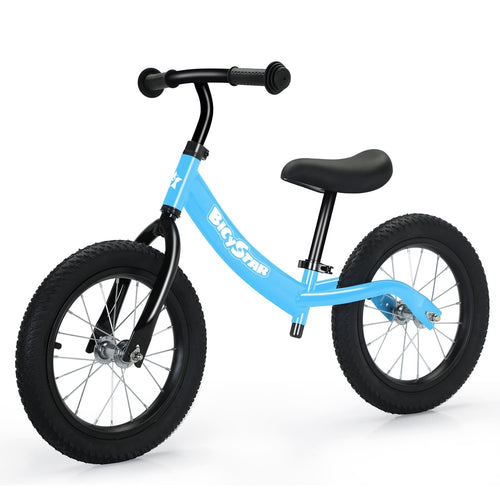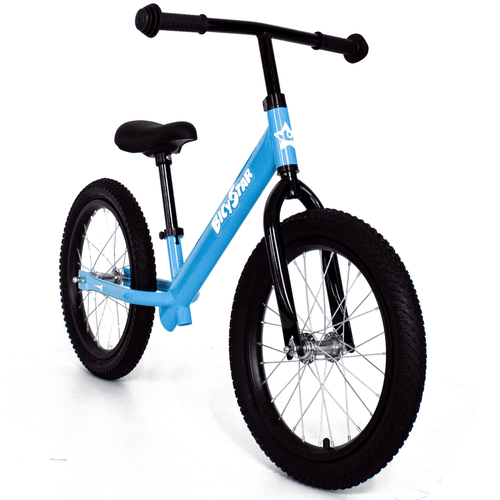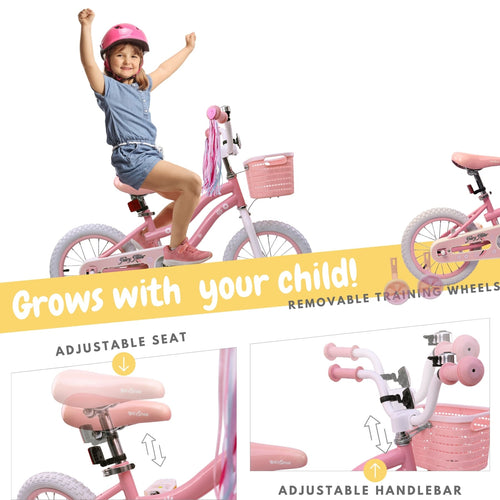The Great Debate: Balance Bike vs. Training Wheels
Hey there, passionate parent! You're here because it's that heartwarming (and slightly nerve-wracking) time to teach your toddler how to ride a bike. And if you’ve been doing a wheelie deep dive into the best ways to kickstart this rite of passage, you’ve likely hit a fork in the road: balance bike for kids or training wheels? Well, you’ve come to the right place.
Now, anyone who’s seen a tiny tot triumphantly master their first ride knows this isn't just about bikes—it's about balance, confidence, and a sprinkling of scraped knees. It's a classic showdown, like peanut butter versus jelly, but in the bike world. On one side, you’ve got the sleek, no-pedal balance bike, the modern maverick that's all the rage in the playground. On the other, the traditional pedal bike buttressed with those little side wheels, aka training wheels, like a trusty old friend.

So, for a toddler, it's about learning to ride a bike - what's it gonna be? A slick balance bike that promises grace and stability, or the old-school vibe of a pedal bike with training wheels that’s stood the test of time? This is the ultimate show down on how your kid will learn to turn those pedals and sail down the street—looking cooler than a polar bear in shades, I might add.
But don't spin your wheels in frustration just yet! I’m here to help you navigate through the ins and outs of both options. Together, we’ll zoom into what might work best for your mini cycle-star. And remember, the finish line isn't just about getting the bike moving, but igniting a lifelong love of bikes in your kiddo. Ready to roll? Great! Pedal on through this blog, and if your gears are itching to get moving, peddle over to BICYSTAR to find the perfect starter kit for your future cyclist. Let’s ride!
The Breakdown: What Are Balance Bikes and Training Wheels?
Alright, let's get down to brass tacks and talk details. A balance bicycle, in its simplest form, is a two-wheeled wonder without pedals. That's right, no pedals, no gears, just a sturdy little bike frame that’s designed to do one thing incredibly well: teach your tot the art of balance. Your little rider uses their legs to stop, go and, most importantly, balance. It's like the training version of a unicycle, minus the circus music.
These bikes are built close to the ground. This design encourages kids to lift their feet and find their center of gravity, all while zipping along (at a parent-approved speed), developing a balance and coordination that'll make a trapeze artist jealous.
Then you have training wheels, those extra two appendages on either side of the rear wheel that seem to scream 'I've got your back!' They’re the classic go-to for preventing tots from toppling over and giving them the chance to focus on pedaling and steering. Yes, they make the bike a four-wheeler but think of them as the sidekick that’s there to catch your mini-hero if they sway a little too much while battling the monster known as 'Learning to Ride a Bike.'

But let's pump the brakes for a sec – it's not all smooth sailing with training wheels. There's a bit of a learning curve when it comes to transitioning from four wheels back down to two. That's because training wheels can give a false sense of security. Kids don’t really learn to balance; they learn to rely on those little wheels to keep them upright.
So, pedal bike with training wheels or the minimalist approach of a balance bike? It’s a big decision, one that goes beyond choosing between chocolate and vanilla. It's about helping your child cruise confidently into their bike-riding adventures.
Why Balance Bikes Are Better According to Experts
Lean in close because I've got the scoop straight from the cycling gurus. It's a well-pedaled fact among bike buffs that balance bikes often edge out training wheels when it comes to the ultimate teaching tool for tots on two wheels. But why, you ask? Let's kick off with reasons why balance bicycles may just be the better option.

First and foremost, balance is the real McCoy in cycling. Sure, pedaling is important, but if you can’t stay upright, you're going to spend more time tasting dirt than feeling the wind in your hair. Balance bikes teach the skill of balance from the get-go. There’s no reliance on extra wheels; it’s just your child and their sense of equilibrium, learning to keep the bike upright like a good tightrope walker.
Second, balance bikes are all about active learning. When kids ride a balancing bike, they use their legs to move forward and, crucially, they learn to steer. It’s a full-body exercise in coordination—like patting your head and rubbing your belly while jumping on one foot (okay, maybe not that complex, but you get the idea).
And it's not just about balance. Did you know that balancing bikes typically help wee ones transition to pedal bikes much quicker than training wheels? That’s right. Kids on balancing push bikes tend to skip the training wheel phase altogether. They go from balance champions to pedaling pros without missing a beat because they've developed the core stability necessary to ride a bike confidently.
Now, if these expert insights have you nodding along, you might be one step from making a decision. Remember, you're not just buying a bike; you're investing in your kid's independence on two wheels.
As you're picturing your little one cruising down the sidewalk with a beaming smile, let’s shift gears and talk about those extra mini wheels you might be considering ditching.
Training Wheels: Do They Keep the Bike Upright or Hold Kids Back?
Now, let's roll into the world of training wheels for a minute. Yes, they've been the go-to sidekicks for newbie pedalers for generations, but the big question is, do they actually help, or do they just put off the inevitable tumble into true riding?
Training wheels do have their perks—they allow kids to hop on a pedal bike and get moving right away. The immediate gratification of pedaling can be quite exhilarating. It's like having floaties in a pool; they provide a sense of security and can be pretty darn comforting when you're just starting to dip your toes into something new.
But here's the kicker: training wheels might just be too comforting. They keep the bike upright, yes, but they don't really teach your child how to balance. Training wheels hold the bike in place, so there’s very little side-to-side motion. This means that your child isn’t using their core to stabilize the bike—arguably the most crucial skill in bike riding.
In fact, training wheels can give a completely off balance experience. Kids learn to lean into the training wheels, which can become a tough habit to break when it's time to transition to a two-wheeler. It’s like learning to swim with floaties but never actually figuring out how to float on your own.
So, it’s a bit of a balancing act (pun intended). While training wheels aren’t totally bad, they might not be the most efficient path to true biking proficiency. Do you want your child to ride a bike, or do you want them to master the balance and freedom that true cycling offers?
Transitioning with Ease: Balance Bikes to Pedal Bikes vs. Training Wheels to Pedal Bikes
When it's time to turn the page from beginner bikes to the real deal pedal bikes, the journey can look pretty different depending on whether you started your tot on a balance bike or a bike with training wheels. Let’s chat about why trading out the training wheels for a balance bike could be the smoother route for your little cyclist.

Kids who begin with balance bikes basically play the long game of learning to ride – they’re building a solid foundation from the very start. Instead of relying on the crutch that training wheels provide, they’re developing that oh-so-critical sense of stability and mastering the art of steering a kids bike. This skill set makes the leap to a pedal bike not so much a leap as a small, confident step – these kids already understand the mechanics of biking; they just need to add pedaling into the mix.
On the flip side, kids transitioning from training wheels may feel like they're learning to ride all over again. It’s not uncommon for them to be wobbly at first when learning to pedal because, hey, those side wheels aren't there anymore to catch them if they sway. The process can feel like a string of stumbles and starts since their previous ride did most of the balance work for them.
Honestly, balance bike riders simply find it easier to ride a pedal bike after mastering a balance bike. They often skip the whole using training wheels phase, which means you also get to skip the bit where you run behind the bike holding the seat, fearing for your back (and your kid’s knees). It’s win-win: fewer falls for them, less stress for you.
Balance Bikes on Varied Terrain: The Flexibility of a Bike Without Training Wheels
So, let’s tackle the terrain. We're talking gravel, grass, curbs, and all the mini mountains and valleys your backyard or local park can muster. Here's where the allure of balance bikes truly shines: these nifty two-wheelers can handle a surprising variety of surfaces, propelling your kiddo into a world where they can pretty much go anywhere, and I mean anywhere.

The truth is, balance bikes are like the mountain goats of the kid-bike world. They're nimble. They can hop from the smooth, flat surfaces of your driveway to the wilds of the park without missing a beat. Kids learn to navigate these mini-adventures on their own, adjusting their balance as they tackle small dips and bumps. It's an unparalleled freedom, one that hones their skills and boosts their confidence every step of the way.
But let's not forget about those little peddlers on bikes with training wheels! The stability training wheels provide on pavement can suddenly become a bit of a liability on uneven ground. Training wheels may cause the bike to tilt at awkward angles on rough terrain, which can be startling for a youngster. It’s like having a safety net that suddenly becomes a little less... well, safe.
Now, if this sense of all-terrain adventure calls to your child's wild heart, and you’re itching to see them conquer the local pump track, grassy knolls, and everything in between, the balance bike from bicystarstore.com is your go-to chariot. The freedom to explore without the limitation of training wheels is just a glorious sight—a sight that's yours to witness with each balance bike ride.
Next up, let's give the brakes a squeeze and glide into the safety talk – because what's more important than keeping our little speedsters secure and sound? Stay tuned, as we’ll delve into the safest options for your budding biker.
Safety First: Which is the Safer Option for Your Child?
When it comes to our kids, nothing is more important than safety. We cushion the corners of coffee tables, we hover at the playground, and yes, when it comes to bikes, we're every bit as vigilant. So, between using training wheels or getting a balance bike for kids, which option secures the helmet of safety champion?
Let’s brake it down: Balance bikes have a low center of gravity. Your little one’s feet are never too far from the ground, ready to stabilize or brake themselves if they feel they’re going too fast or losing balance. The risk of toppling over is minimized because balance bike riders learn to control their movements and judge their own limits. It’s like having built-in training wheels at their toes – except they actually teach balancing skills.

On the other hand, the safety net that training wheels provide can sometimes backfire. Yes, they prevent the bike from tipping over, but they can also be a bit deceptive. You see, training wheels keep the bike upright even when a child is leaning way too far to one side, which isn't typically how bikes work (unless you're defying physics, which would be awesome but unlikely). So, what happens when those training wheels come off? You guessed it: the child isn't used to correcting their balance, leading to wobbles and the occasional tumble.
With the final section ahead, let's pedal on towards the finish line, where you'll be able to decide which bike gets the gold star for safety and ease of learning.
The Verdict: Should You Buy a Balance Bike or Opt for Training Wheels?
It’s been quite the ride, hasn't it? We've zipped through the dynamics of balance bikes and training wheels, coasted over their pros and cons, and navigated the safety landscape. Now, it's time to park up and decide: Which will it be for your little one—a balance bike or training wheels?
To wrap it up, let's cycle back over the main takeaways from our discussion. Balance bikes emphasize the skill of balancing right from the start and encourage a natural progression to a pedal bike. No extra gear, no unnecessary aids—just your child, two wheels, and a world of confidence-building adventures. They learn about balance, they learn about control, and they learn to trust their own instincts.
Training wheels, though long-trusted by many, may serve as more of a temporary crutch than a teaching tool. They do allow your child to feel the excitement of pedaling immediately, but at the cost of postponing the essential skill of balance. And when the time comes to ditch those side wheels, your child might be in for a tricky transition, relearning how to keep their bike upright.
So, after turning the pedals on this biking debate, the choice between a balance bike or training wheels comes down to your parenting style, your child’s personality, and the cycling experience you envision. One thing's for sure, though, whichever route you choose will lead to cherished memories of your child's first foray into biking. Let’s move on to our conclusion, where I'll leave you with the essential points to help you coast into making the best choice for your future cyclist.
Conclusion: Takeaways for Training Your Tot

We've taken a detailed tour of the balance bike and training wheels landscape, and it’s been a joyride of insights and expert opinions. Now, before you saddle up and ride off into the bicycle-buying sunset, here are the most important tidbits to keep in your mental pannier:
- Skill Development: Balance bikes cultivate the critical skill of balancing from the earliest rides, setting a solid foundation for all future biking endeavors.
- Safety Measures: With feet close to the ground and the introduction of brakes, balance bikes are built for natural safety and control—factors that become ingrained in young riders.
- Transition Ease: Children graduating from balance bikes to pedal bikes often do so with less fuss and more confidence, swiftly ditching the need for training wheels.
- Terrain Adaptability: Balance bikes offer a versatility that sees your tiny trailblazers mastering various terrains, enriching their riding experience and skill set.
- Long-Term Benefits: Investing in a balance bike might seem like a single step, but it's a leap in teaching your child about cycling, balance, coordination, and the sheer joy of two-wheeled adventures.
- The Fun Factor: Never underestimate the power of fun—balance bikes score high on the "This is awesome!" scale from kids and adults alike.
Armed with these points, you’re now well-equipped to make an informed decision that will not only suit your child today but will pave the way for a smooth ride into their biking future. Remember, whether they’re gliding on a balance bike or pedaling with training wheels, you’re nurturing a new generation of cyclists. And that’s a beautiful thing.
Take a deep breath—you're about to make a purchase that will send your child wheeling into a lifetime of healthy, happy biking. Here’s to the rides, the falls, the gets-back-up-agains, and to the wind-in-hair, wheel-spinning freedom waiting just around the corner. Happy biking!













